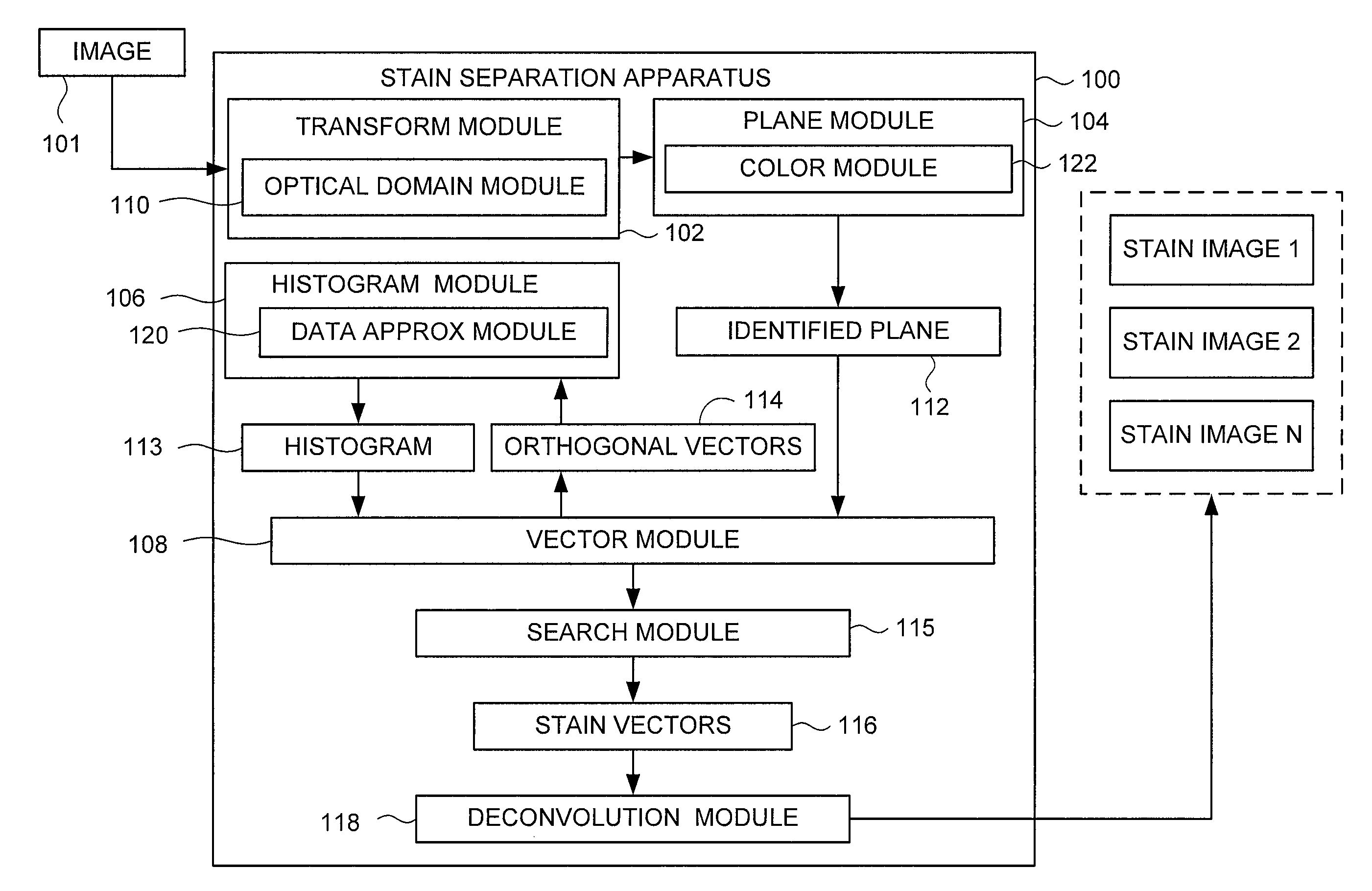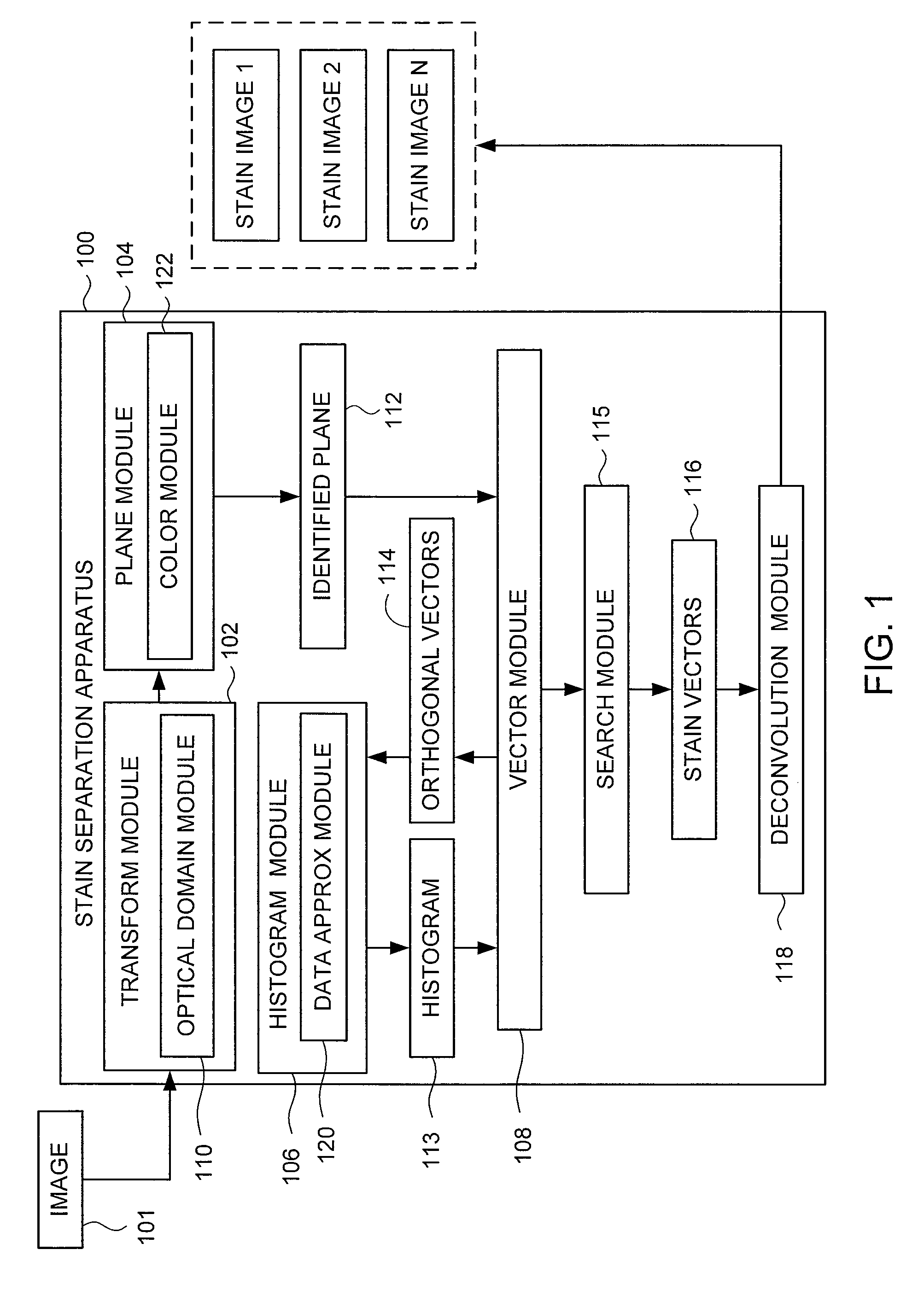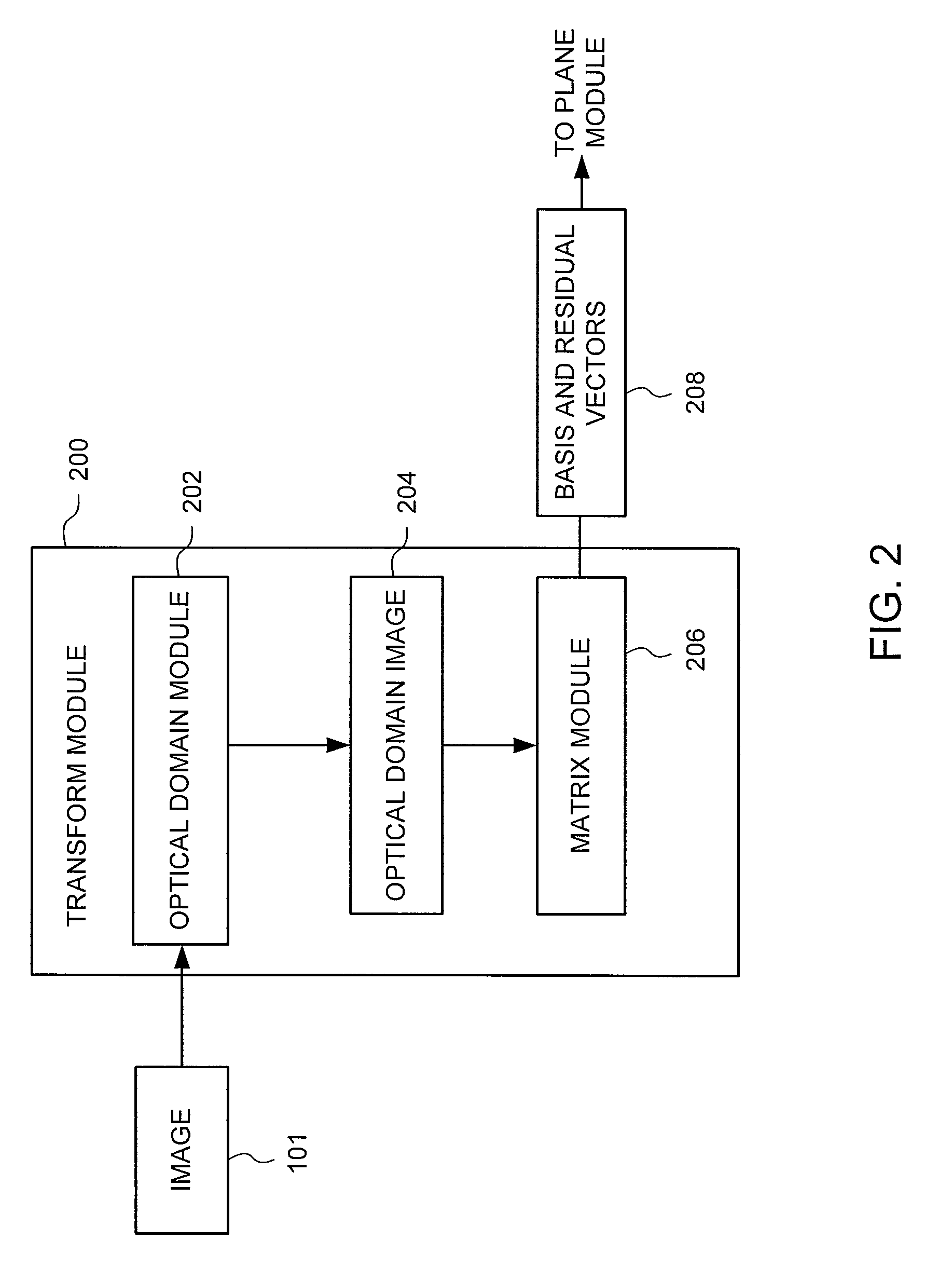Method and apparatus for stain separation in digital pathology images
a digital pathology and stain separation technology, applied in the field of pathology image analysis, can solve the problems of inability to achieve the stain separation effect,
- Summary
- Abstract
- Description
- Claims
- Application Information
AI Technical Summary
Benefits of technology
Problems solved by technology
Method used
Image
Examples
Embodiment Construction
[0017]As explained further below, various embodiments of the invention disclose a method and apparatus for stain separation in digital pathology images. In one embodiment, a digital pathology image is converted from its color domain to the optical density domain color mode using a logarithmic conversion operation. The optical density is a logarithmic ratio of the radiation falling upon a material, to the radiation transmitted through a material. The digital pathology image often is stained with various stains to differentiate between particular specimens. Converting to the optical density image is a preprocessing step used to isolate the effects of the various stains. Basis vectors are determined for colors represented in the optical domain image, and a plane is constructed from the basis vectors. Two orthogonal vectors are extracted from the plane and a histogram is formed of the original data represented by the orthogonal vectors, thereby reducing the quantity of data to process. ...
PUM
| Property | Measurement | Unit |
|---|---|---|
| optical density | aaaaa | aaaaa |
| optical density | aaaaa | aaaaa |
| color domain | aaaaa | aaaaa |
Abstract
Description
Claims
Application Information
 Login to View More
Login to View More - R&D
- Intellectual Property
- Life Sciences
- Materials
- Tech Scout
- Unparalleled Data Quality
- Higher Quality Content
- 60% Fewer Hallucinations
Browse by: Latest US Patents, China's latest patents, Technical Efficacy Thesaurus, Application Domain, Technology Topic, Popular Technical Reports.
© 2025 PatSnap. All rights reserved.Legal|Privacy policy|Modern Slavery Act Transparency Statement|Sitemap|About US| Contact US: help@patsnap.com



